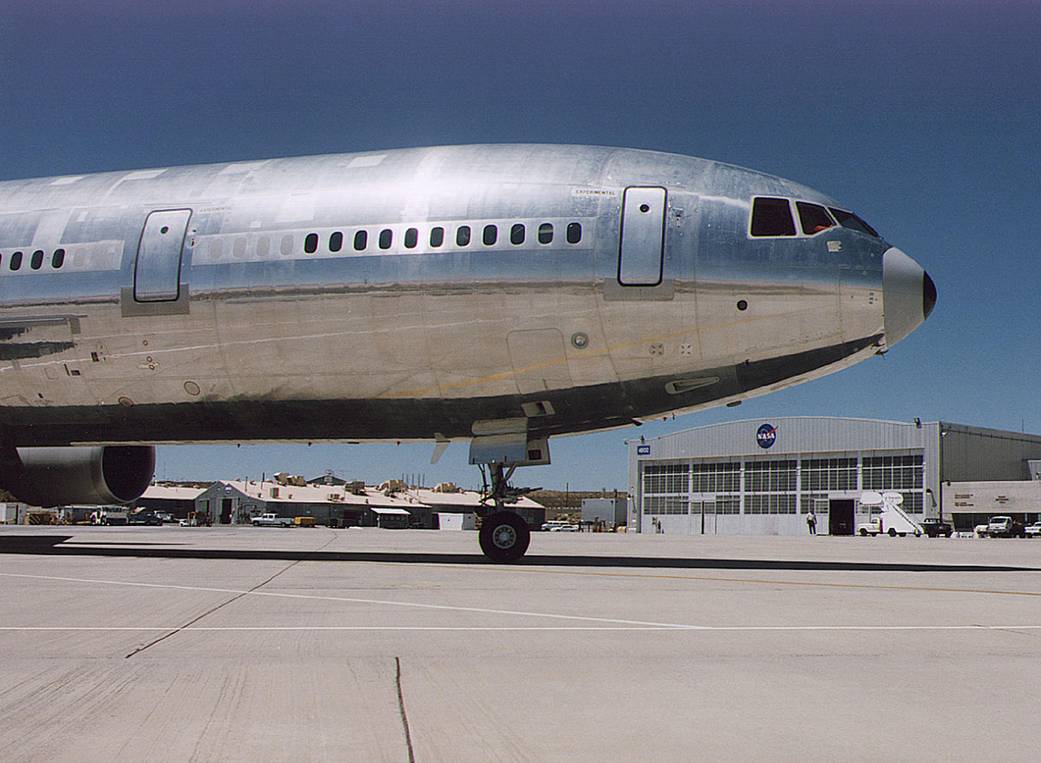
EC95-43251-1
This McDonnell Douglas MD-11 has taxied to a position on the flightline at NASA’s Dryden Flight Research Center, Edwards, Calif., following its completion of the first and second landings ever performed by a transport aircraft under engine power only (on Aug. 29, 1995).
The milestone flight, with NASA research pilot and former astronaut Gordon Fullerton at the controls, was part of a NASA project to develop a computer-assisted engine control system that enables a pilot to land a plane safely when its normal control surfaces are disabled. The Propulsion-Controlled Aircraft (PCA) system uses standard autopilot controls already present in the cockpit, together with the new programming in the aircraft’s flight control computers.
The PCA concept is simple. For pitch control, the program increases thrust to climb and reduces thrust to descend. To turn right, the autopilot increases the left engine thrust while decreasing the right engine thrust. The initial Propulsion-Controlled Aircraft studies by NASA were carried out at Dryden with a modified twin-engine F-15 research aircraft.29 Aug 1995NASA Photo› Read MD-11 PCA Project Description

























